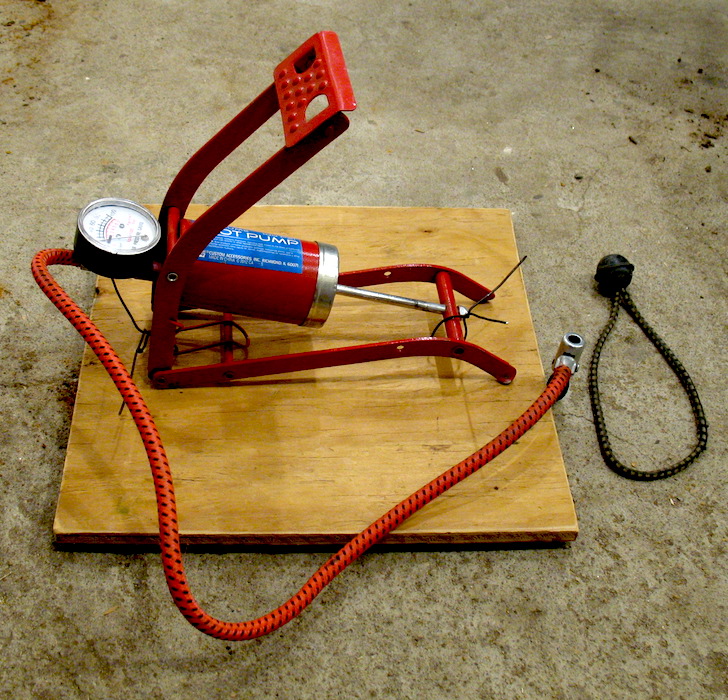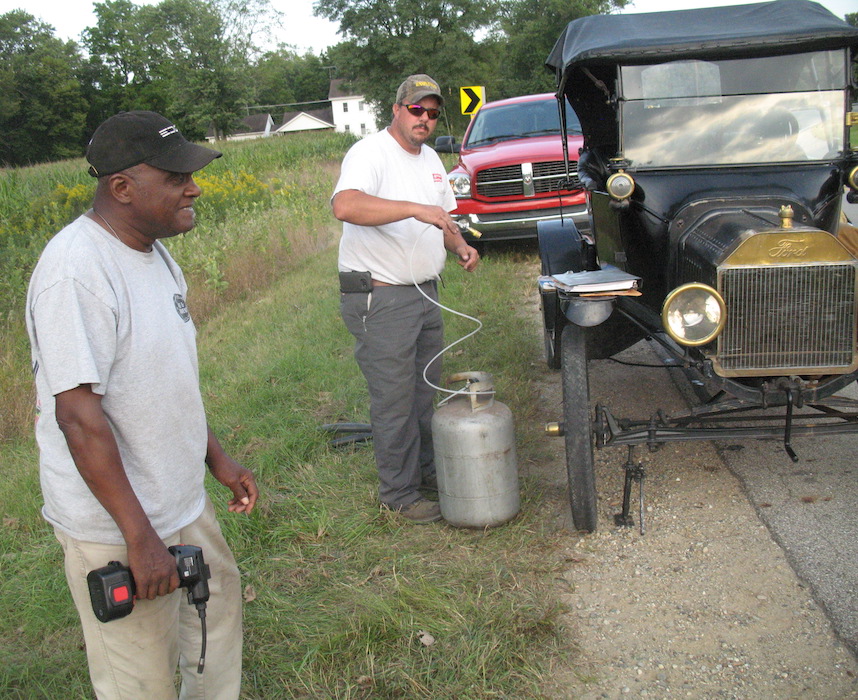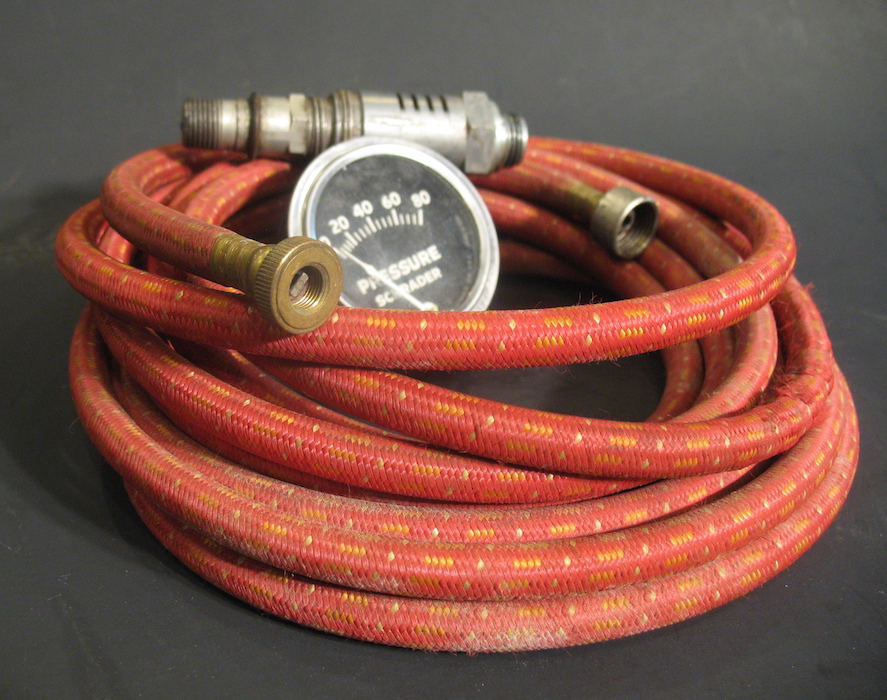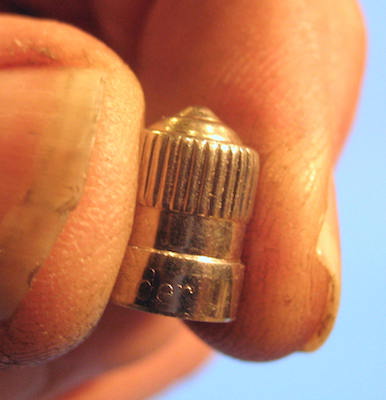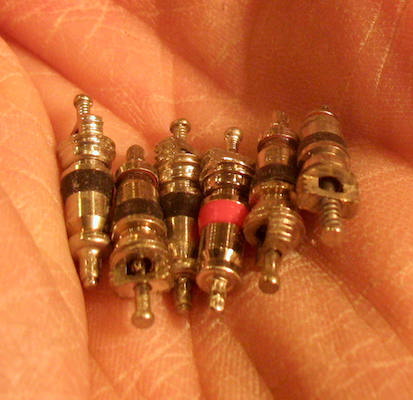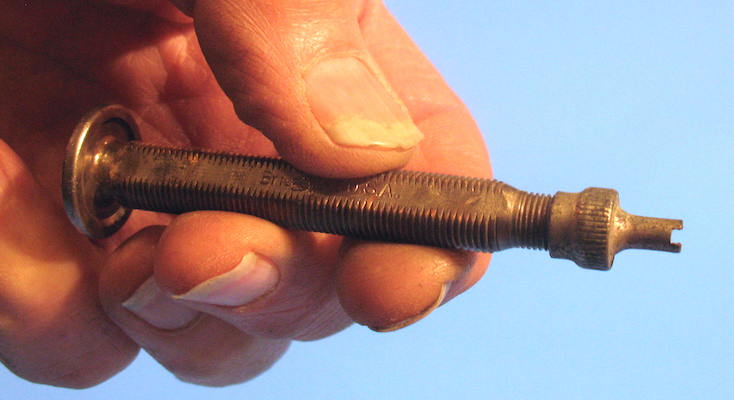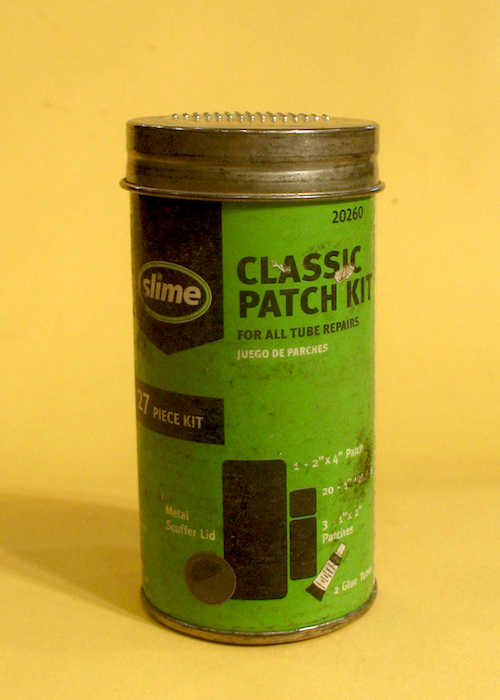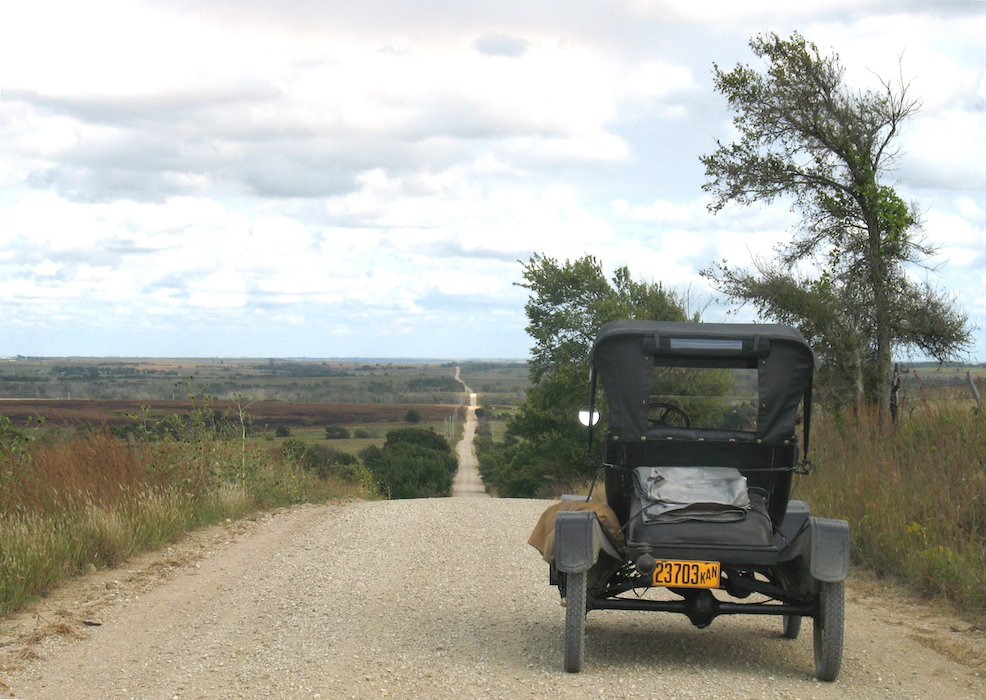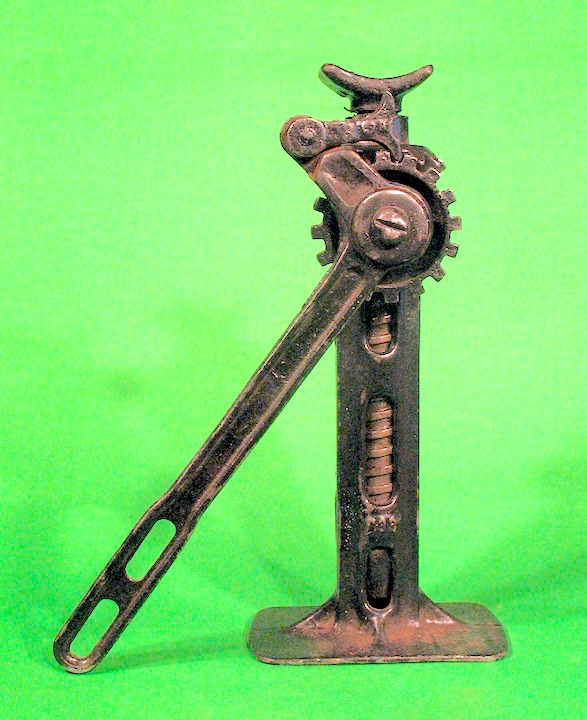
One necessity is a jack. This is the
standard Ford screw jack that was issued with every car
until 1925, when it was replaced by a pressed steel version. Some people dislike this jack,
but I've found it perfectly adequate. Along with the jack, it's good to have wheel chocks to be sure the car doesn't roll, and at least one 2 x 8 or 2 x 6 block to put under the jack. Sometimes two blocks are better than one.
until 1925, when it was replaced by a pressed steel version. Some people dislike this jack,
but I've found it perfectly adequate. Along with the jack, it's good to have wheel chocks to be sure the car doesn't roll, and at least one 2 x 8 or 2 x 6 block to put under the jack. Sometimes two blocks are better than one.
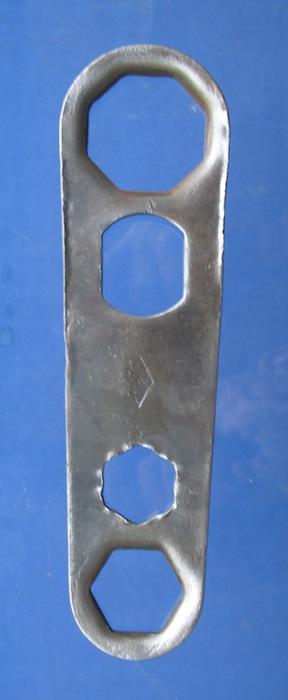
If you carry a spare front wheel you
will need
the #1349 Ford wrench...
the #1349 Ford wrench...
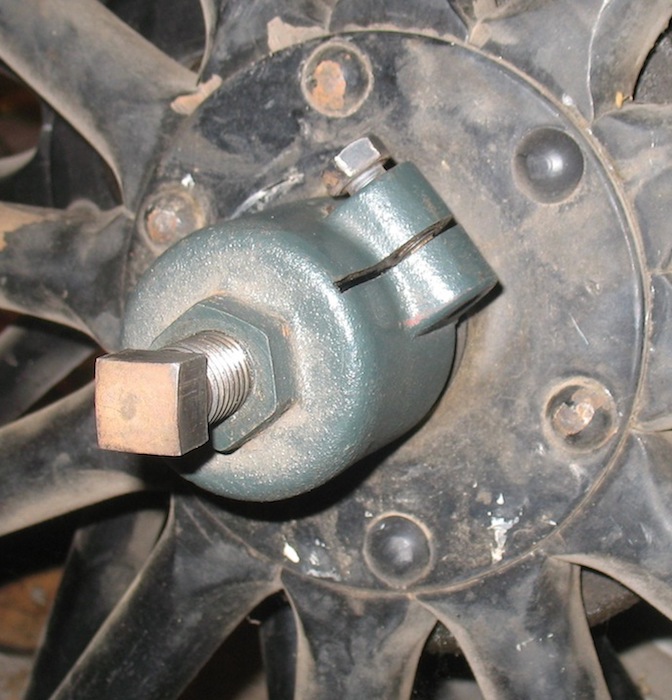
...and if you carry a spare rear wheel
you'll need a wheel puller, a socket to fit the wheel nut,
a breaker bar to get it good and tight, pliers, and cotter pins
a breaker bar to get it good and tight, pliers, and cotter pins



